June 16, 2025 | 21:28 GMT +7
June 16, 2025 | 21:28 GMT +7
Hotline: 0913.378.918
June 16, 2025 | 21:28 GMT +7
Hotline: 0913.378.918
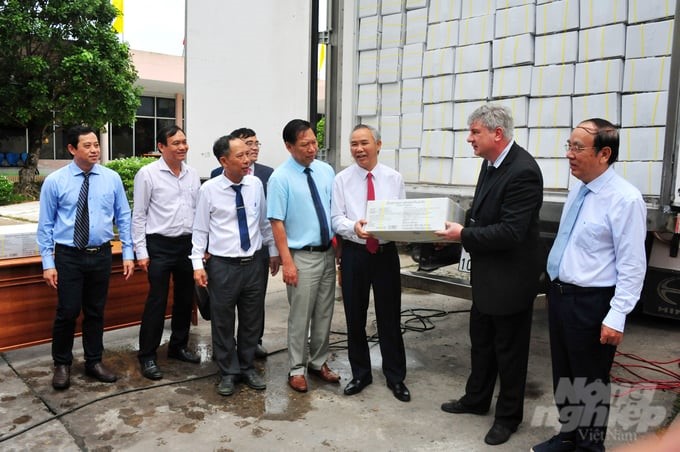
Nam Viet Joint Stock Company's pangasius shipment is produced according to a high-tech process and announced for export to markets such as Thailand, China, and South America. Photo: Le Hoang Vu.
The pangasius industry in the Mekong Delta has faced many difficulties in exporting products for many years. This shows that for the industry to develop stably and sustainably in the coming time, one of the prerequisites in development strategic planning is to start with the market.
An Giang is one of the leading localities in developing the pangasius farming and processing industry for export, with an annual farming area of nearly 2,000 hectares, yielding over 400,000 tons. The whole province currently has 20 enterprises, with 23 processing factories, reaching a processing capacity of more than 320,000 tons/year.
In 2022 alone, despite just coming out of the epidemic, enterprises in the province have exported 162,000 tons of pangasius, earning USD 380 million, an increase of 1.59% in volume and an increase of 2.03% in turnover compared to the year 2021.
These data show that the pangasius industry still has a lot of potential for development. First of all, the farming area is nearly 2,000 hectares, while the processing capacity of 23 factories has only reached half of the designed capacity.
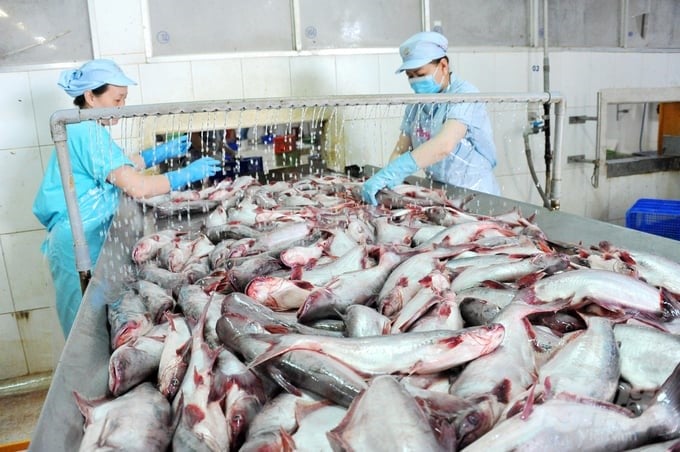
In 2022 alone, enterprises in An Giang exported 162,000 tons of pangasius, earning USD 380 million. Photo: Le Hoang Vu.
The advantages of water resources, climate, soil, and production experience are huge. Therefore, in order for the pangasius industry to continue to develop in the coming time, the State needs to promote re-planning of the industry in the direction of tightly controlling the farming area when fish prices increase.
It is better to raise a little and sell at a high price than to raise a lot but sell slowly and at a low price. There needs to be a mechanism to control the prices of animal feed and aquatic veterinary drugs so that farming costs do not fluctuate as much as they do today. An Giang and Dong Thap are two localities that are continuing to promote the implementation of a 3-level pangasius breeding program so that pangasius farming businesses and people have enough healthy, disease-free fingerlings, helping the survival rate of pangasius fingerlings in commercial farming tanks get higher and higher.
Mr. Doan Toi, General Director of Nam Viet Joint Stock Company, said: “The market mentioned here must first be the product consumption market (including domestic and foreign), the feed and aquatic veterinary medicine market, and the pangasius breed market.
These are three important markets to implement the industry value chain that we have been working on for 35 years (since Vietnam exported the first shipment of pangasius to Australia in 1988).”
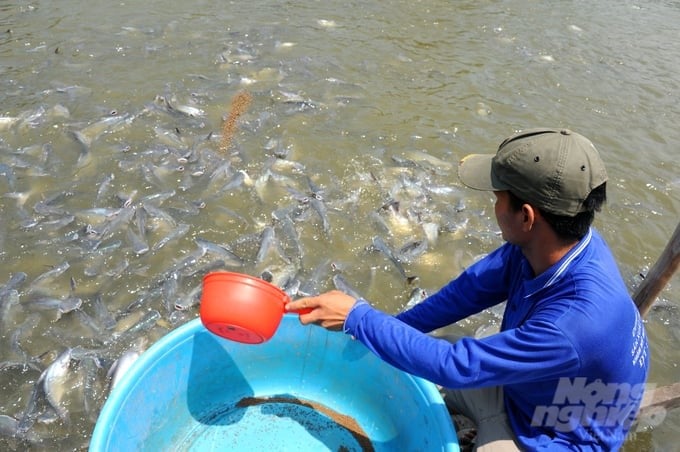
An Giang is one of the leading localities in developing the pangasius farming and processing industry for export, with an annual farming area of nearly 2,000 hectares, yielding over 400,000 tons. Photo: Le Hoang Vu.
Based on market forecasts, enterprises and fishermen organized production to meet demand. This is a scientific way of both reflecting the production level of enterprises and fishermen in the process of international economic integration and helping customers stabilize distribution plans and develop new markets. If following this method, the pangasius industry will not have to witness the chorus of "good season - loss of price, or good price - loss of season".
“Fishermen, enterprises, and product buyers all make a profit in the year when the output of pangasius farming is lower than market demand. On the contrary, all will lose money if farming output far exceeds consumption demand. Thus, it is better to raise a little and sell for a good price than to raise a lot and cannot sell", said Mr. Doan Toi, General Director of Nam Viet Joint Stock Company.
According to comments from other businesses in the pangasius industry in the Mekong Delta, over the past 35 years, when commercial pangasius reached a price of VND 36,000/kg or more (in October 2018), the farming area immediately increased rapidly, causing an imbalance between supply and demand.
That year, the entire Mekong Delta region raised up to 5,600 hectares, of which An Giang raised 1,700 hectares, and Dong Thap's pangasius farming area increased to 2,500 hectares. As a result, the product could be sold, and the price of fish fell dramatically.
In particular, over the past year, when the Russia-Ukraine military conflict broke out and the world entered a global economic recession, pangasius consumption became extremely difficult because consumers always saved the expenditure. Fishermen and businesses are currently in a difficult situation and waiting for pangasius prices to increase again.
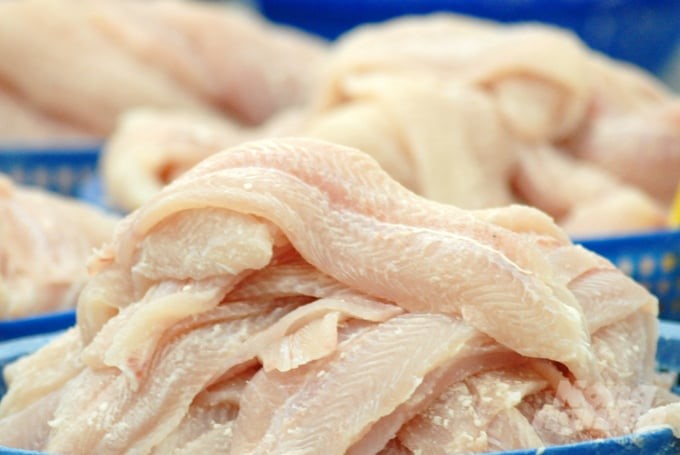
Pangasius production must start with the market. This is a prerequisite for this industry to win many victories. Photo: Le Hoang Vu.
Mr. Nguyen Si Lam, Director of the An Giang Department of Agriculture and Rural Development, said, “Production must start with the market. This is a prerequisite for this industry to win many victories. To do this, it is necessary to continue to promote the role of industry associations, have a mechanism to strictly control farming planning, and at the same time build a mechanism to control the current prices of feed and aquatic veterinary drugs on the market.
To help the pangasius industry overcome difficulties and aim for development in the coming time, the An Giang agriculture sector continues to support seafood enterprises in the process of implementing investment projects in seed production and high-tech aquaculture areas. At the same time, create conditions to support the expansion and development of production linkage chain models in seed production activities.
Translated by Huyen Vu Thu

(VAN) Noting risks, report examines impacts of avian influenza, changing trade patterns since 2022, fish fraud, and shipping industry’s net-zero goals.

(VAN) Mr. Tran Quang Bao, General Director of the Forestry and Forest Protection Department, met and worked with the International Wood Products Association to promote cooperation in the field of timber trade.

(VAN) China's outbound shipments of rare earths in May jumped 23% on the month to their highest in a year, though Beijing's export curbs on some of the critical minerals halted some overseas sales.
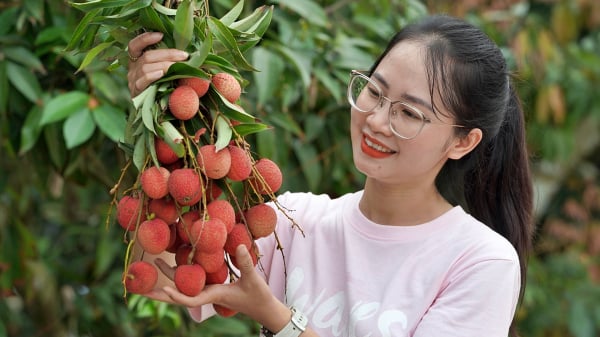
(VAN) To sustain capital flow, administrative reform alone is not enough; what farmers truly need is an ecosystem where both government and businesses grow together in support.
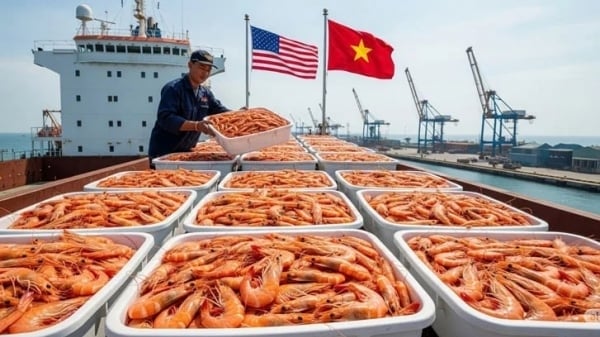
(VAN) Vietnam and the United States are proactively working together, each in their own way, to ensure that every container of agricultural goods carries not just products, but also long-term trust and value.
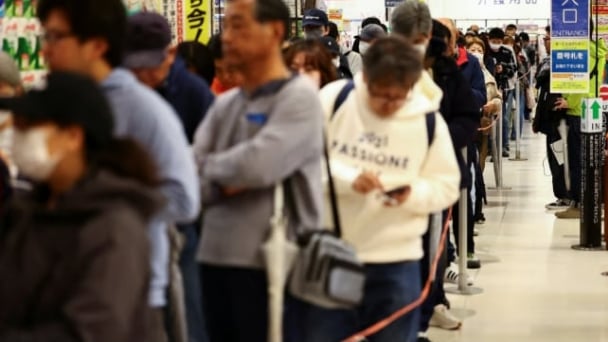
(VAN) Stores have started selling rice from the government’s stockpile to feed demand for the staple.
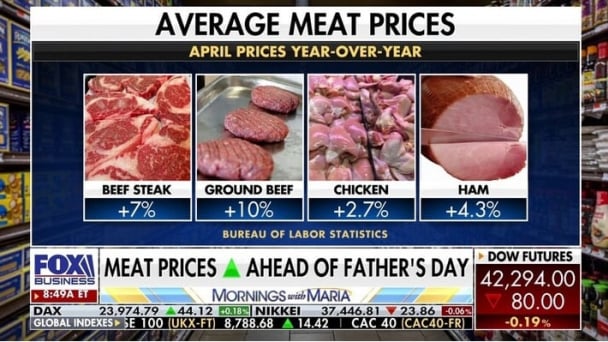
(VAN) Omaha Steaks CEO says rebuilding cattle herds will take about a year to ease price pressures.